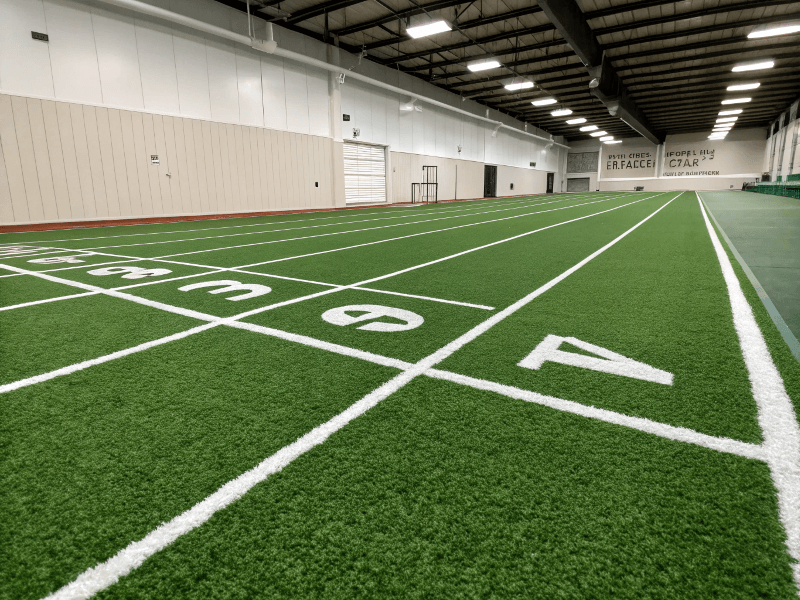The sleds wouldn’t budge because of a perfect storm of problems. The new turf’s material and pile height created inconsistent friction, the sleds themselves may have been low quality, and the floor underneath the turf was likely not perfectly flat, creating "sticky spots" that stopped athletes cold.
Watching the Hyrox World Championship recently was tough. As a gym owner, I felt for those athletes. You train for months, pour your heart and soul into prep, only to be stopped by the floor itself. We saw elite athletes, people who can move incredible weight, struggle to get a sled moving on one lane, while another lane seemed like an ice rink. The official word from Hyrox blamed the sleds, but anyone in the fitness community could see it was a bigger issue. Social media lit up with videos showing the turf bunching up and sleds getting stuck. It wasn’t just about winning or losing; it was about the fundamental fairness of the competition being compromised. When your equipment, not your effort, decides the outcome, the sport has a serious problem. It’s a hard lesson, but one every gym owner and event organizer needs to pay close attention to.

This whole situation makes you think about the details that go into creating a great training space.
Was It Just the Turf, or a Deeper Systemic Failure?
It was a deep, systemic failure. The problem wasn’t one single thing, but a chain reaction. The turf’s technical specs were likely a poor match for the event’s demands, the installation was probably rushed, and there was no compatibility check between the new surface and the old equipment.
| Factor | Description | Impact on Sleds |
|---|---|---|
| Turf Specs | Polyethylene material with a 15mm pile height. | Can create high, inconsistent friction and bunching under load. |
| Installation | The floor must be 100% flat and properly secured. | Any unevenness creates "sticky spots" that stop sleds. |
| Equipment | Old or inconsistent sleds on a new, untested surface. | Unpredictable performance, making a fair race impossible. |
When I installed the turf in my gym, I learned very quickly that the details are everything. The manufacturer of our turf, much like the one in the documents, specified that the floor must be 100% flat. That’s not a suggestion. We spent two full days just prepping our concrete subfloor, grinding down high spots and filling low spots, because we knew any imperfection would be felt. A sled will find every single flaw in your floor. The documents also specify that the turf needs to acclimate to the room temperature for at least 24-48 hours and be unrolled to relax. Rushing this step means the turf can expand or contract after it’s glued down, causing bubbles and seams to lift. It seems like the organizers might have overlooked these critical, time-consuming steps in the rush to set up a massive temporary venue. It’s a combination of the wrong material choices meeting a flawed installation process.

Getting the foundation right is the only way to build a reliable training surface.
How Can We Prevent This From Ever Happening Again?
Prevention comes from a multi-layered strategy. In the short term, mandatory, rigorous testing of every single lane is essential. Long-term, there needs to be an official certification system for venues and full transparency with athletes about the surfaces they’ll be competing on.
| Solution Level | Key Action | Purpose |
|---|---|---|
| Immediate | Test every lane with a standardized sled and weight. | Guarantee equal resistance and fairness on game day. |
| Mid-Term | Re-evaluate turf material standards and sled designs. | Ensure equipment is designed to work together reliably. |
| Long-Term | Create an official venue certification process. | Hold venues to a high, consistent standard of quality. |
To avoid this kind of disaster, you have to treat your turf installation like a science experiment. [cite_start]The installation manual I reviewed is clear: you have to use a 50kg roller to press the turf into the adhesive, ensuring no air gets trapped. [cite_start]You have to put extra weight on the seams to keep them from arching up as the glue cures. It’s a meticulous process. For any future event, organizers must perform these steps perfectly. But they need to go further. They should have a "technical delegate" whose only job is to test and sign off on every lane. This person would use a force gauge on a sled to get an objective measurement of the pulling resistance, ensuring every lane is within a tiny margin of error. In the long run, organizations like Hyrox need a "Certified Venue" program. [cite_start]To get certified, a gym or arena would have to prove their subfloor is perfectly level, their turf is a pre-approved type, and their installation meets the highest standards. This protects athletes and the integrity of the sport.

Building trust starts with building a solid, reliable foundation for competition.
Conclusion
This controversy is a critical lesson: you can’t compromise on the quality and preparation of the field of play. Fairness and safety must always come before anything else.
We believe that a high-performance facility is the foundation for high-performance athletes. If you’re serious about your training environment and want to learn more about the professional-grade turf we use, get in touch with us. We can provide a custom quote for your space and even send you a free sample so you can feel the quality for yourself. Contact us today!

![小红书6.15WechatIMG6562 31[1]](https://meettfit.com/wp-content/uploads/2025/06/小红书6.15WechatIMG6562_311.jpg)